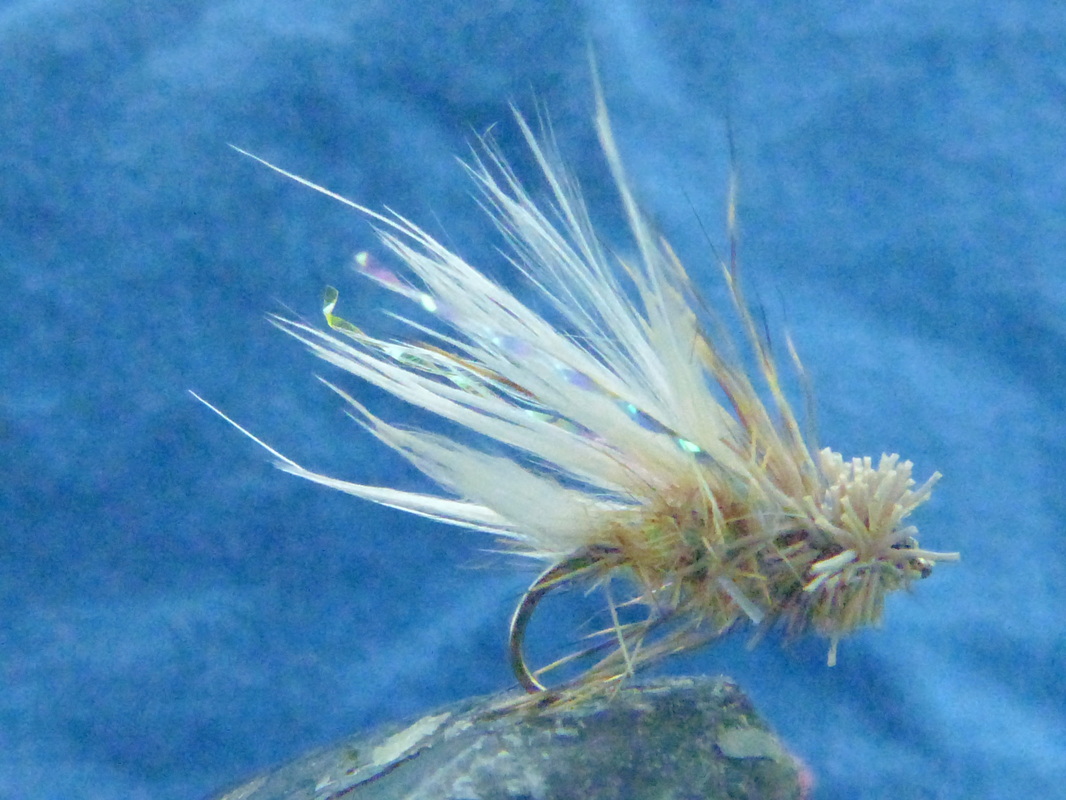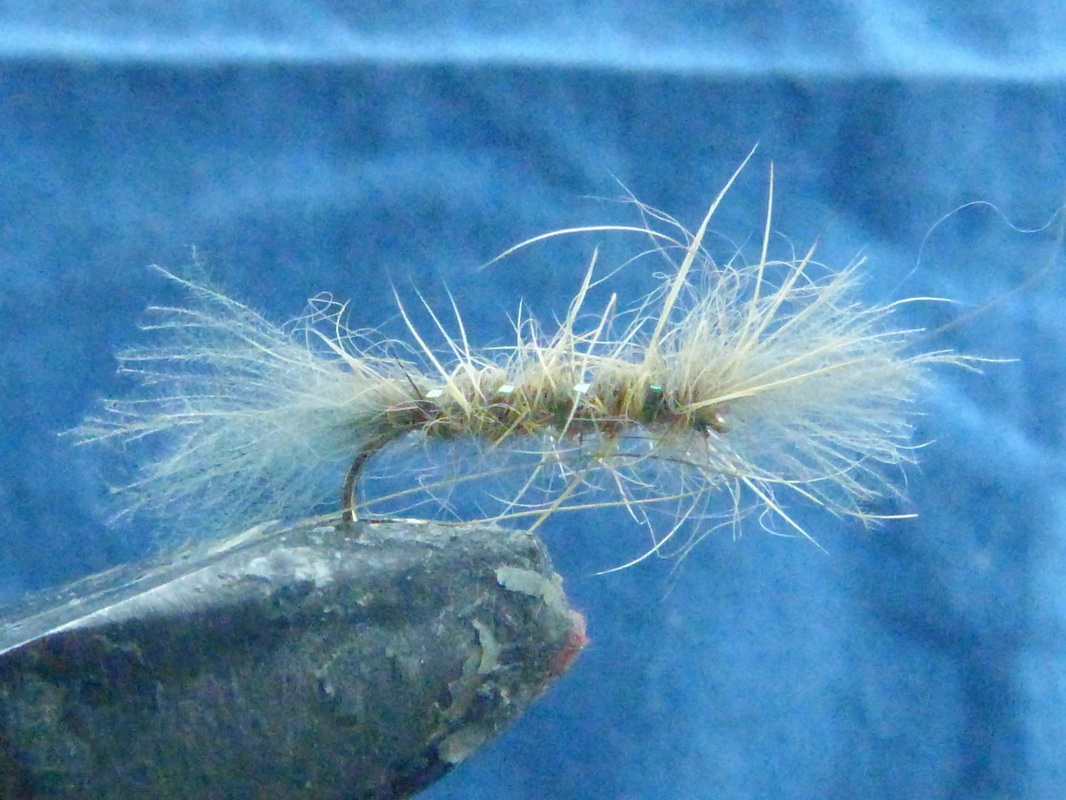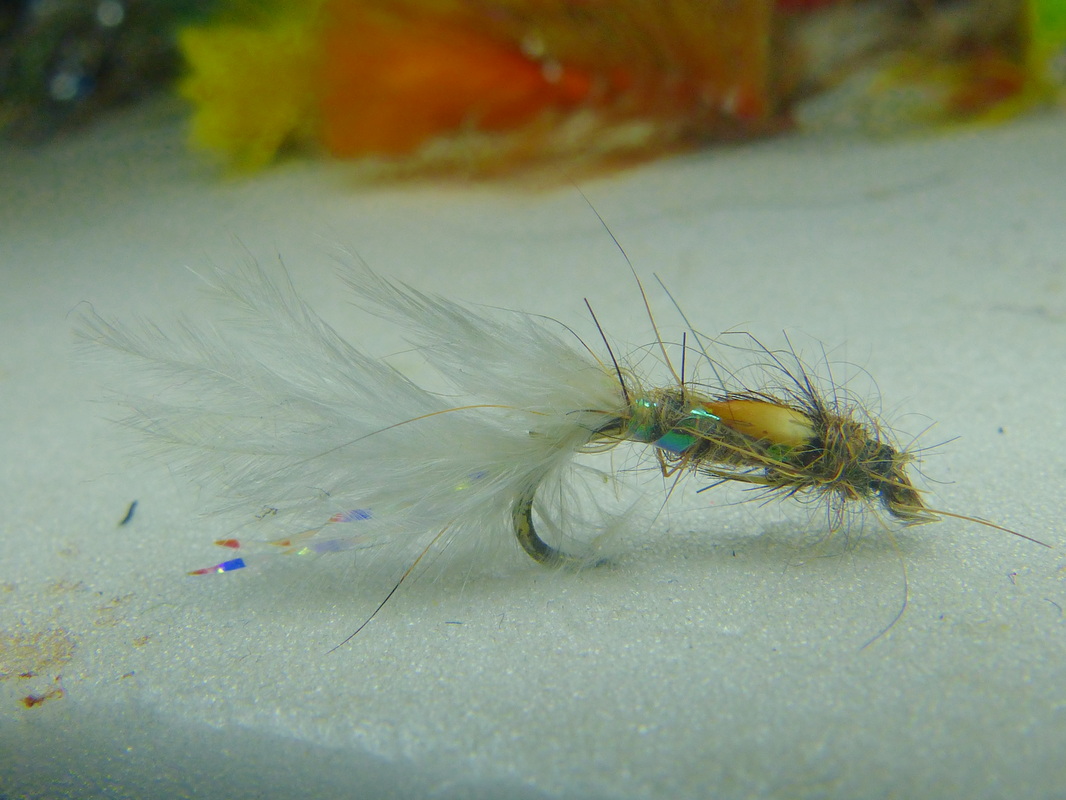Caenis
Caenis is one of the six species of mayfly found in Shetland and is very abundant. They are small white flies but what they lack in size they make up for in numbers and when conditions are right they emerge in huge numbers bringing the trout up with them. A heavy hatch of caenis is a great natural spectacle as well as being a good way to get an idea of the trout population in that water. Sometimes called the anglers curse because though the trout are very visibly active during a hatch they can be very difficult to tempt causing anglers to curse..
The larvae live in the muddy silty shallow regions of lochs and live in higher densities where there is decaying organic detritus and in lower densities on mineral sediments. Caenis nymphs crawl among the silt on the loch bed, and they are often covered it bits of debris that act as camouflage.
The nymph can be a major food source of trout and in theory can imitated with a tiny pheasant tail nymph fished slowly along the bottom of muddy regions should you be of the disposition to do so, however small white mini lures on appropriate sinking lines seem to be the most popular method.
Caenis hatch during calm mild conditions mostly in the evenings from June –August but can hatch at any time of the day or night. They leave the water as winged adult duns, fly to the nearest fence post, car, angler, rock or other object on dry land and immediately shed another skin to become spinners. This is an amazing sight.
The spinners then return to the water to lay eggs.
It is not always productive to imitate such a small fly because it is unlikely to be picked out amongst the millions of other caenis though there are plenty life sized caenis imitations out there . far more productive is use a larger predominantly white fly and cast as accurately as possible to individual rising fish and try and get the fish to see it.
The fish are moving high up in the water with a low window of vison and as such flys fished just under the surface than on seem to have a higher success rate. The challenge is how to keep the fly high enough in the water so it doesn’t sink below the fish, one solution is to use a washing line technique with a buoyant white muddler on the point and a heavier white fly on the dropper possibly fished on a slime line.
When the fish are rising every where the temptation is to keep casting, and whilst it is important to get the fly in front of the fished eye it can also work by keeping the flies in the general area. Two flies lessen’s the risk of tangling when casting is fast and furious. Hatches can be short lived so be ready.
Flies with white marabou, hares ear and pearl ribs are first line of attack.
Caenis is one of the six species of mayfly found in Shetland and is very abundant. They are small white flies but what they lack in size they make up for in numbers and when conditions are right they emerge in huge numbers bringing the trout up with them. A heavy hatch of caenis is a great natural spectacle as well as being a good way to get an idea of the trout population in that water. Sometimes called the anglers curse because though the trout are very visibly active during a hatch they can be very difficult to tempt causing anglers to curse..
The larvae live in the muddy silty shallow regions of lochs and live in higher densities where there is decaying organic detritus and in lower densities on mineral sediments. Caenis nymphs crawl among the silt on the loch bed, and they are often covered it bits of debris that act as camouflage.
The nymph can be a major food source of trout and in theory can imitated with a tiny pheasant tail nymph fished slowly along the bottom of muddy regions should you be of the disposition to do so, however small white mini lures on appropriate sinking lines seem to be the most popular method.
Caenis hatch during calm mild conditions mostly in the evenings from June –August but can hatch at any time of the day or night. They leave the water as winged adult duns, fly to the nearest fence post, car, angler, rock or other object on dry land and immediately shed another skin to become spinners. This is an amazing sight.
The spinners then return to the water to lay eggs.
It is not always productive to imitate such a small fly because it is unlikely to be picked out amongst the millions of other caenis though there are plenty life sized caenis imitations out there . far more productive is use a larger predominantly white fly and cast as accurately as possible to individual rising fish and try and get the fish to see it.
The fish are moving high up in the water with a low window of vison and as such flys fished just under the surface than on seem to have a higher success rate. The challenge is how to keep the fly high enough in the water so it doesn’t sink below the fish, one solution is to use a washing line technique with a buoyant white muddler on the point and a heavier white fly on the dropper possibly fished on a slime line.
When the fish are rising every where the temptation is to keep casting, and whilst it is important to get the fly in front of the fished eye it can also work by keeping the flies in the general area. Two flies lessen’s the risk of tangling when casting is fast and furious. Hatches can be short lived so be ready.
Flies with white marabou, hares ear and pearl ribs are first line of attack.


